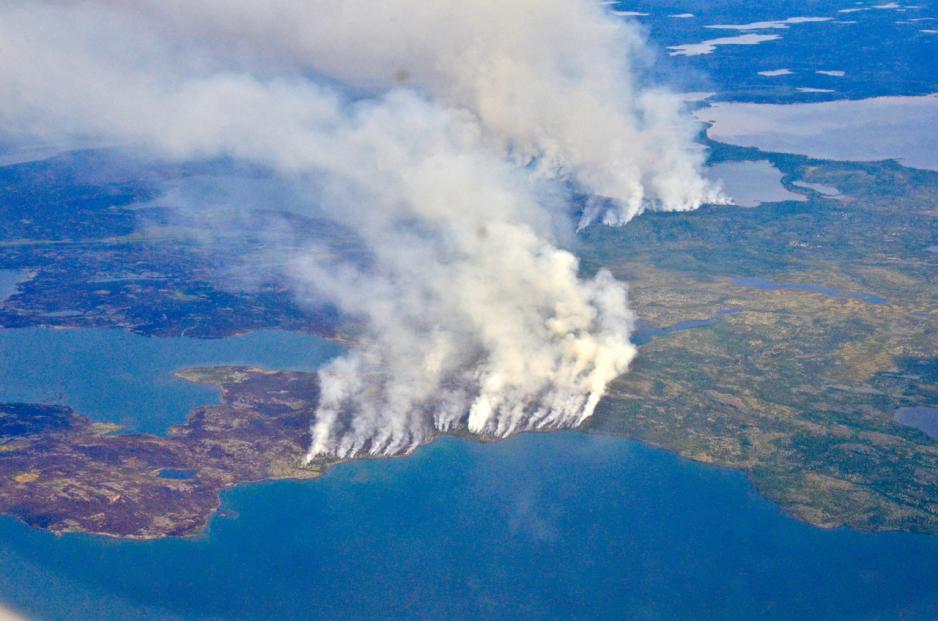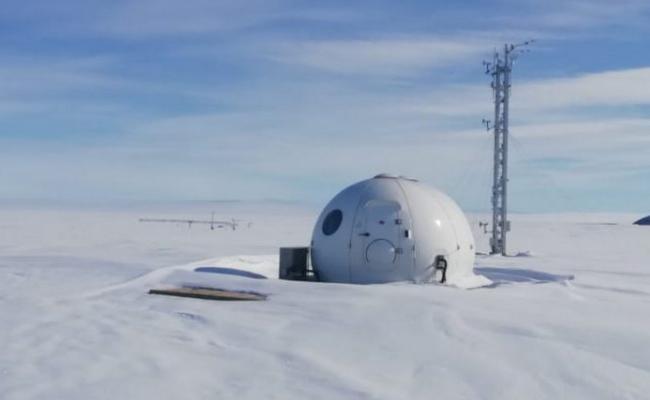Large Parts of Arctic No Longer Carbon Storage, Now Net Source of Emissions

In 2014, megafires in Canada’s Northwest Territories scorched more than 7 million acres of forest, releasing half as much carbon back into the atmosphere as all the plants and trees in Canada typically absorb in an entire year. (Credit: NASA/Peter Griffith)
Climate change is transforming large parts of the Arctic region from a carbon sink to a net carbon emitter, a new study published in Nature concludes. Up to 40 percent of the region’s tundra, boreal forests, and wetlands now release more CO2 than they absorb. Data gaps, especially in Siberia, hamper the understanding of the carbon dynamics.
The boreal landscapes of the Arctic are rapidly warming with a dramatic impact on its ability to function as the world’s largest carbon sink. A new study warns that the Arctic tundra has been a carbon sink for millennia, but this may now be changing.
The region instead may be on the cusp of functioning as a CO2 source. The transition phase from a sink to a source may have been ongoing for decades preceding the 1990s, but the exact timing requires additional study.
While large swaths of the region continue to function as a carbon sink, absorbing more emissions than they produce, an increasing share of the tundra has become a carbon emitter.
Increases by 40 percent
Around a third of the Arctic is now a net source of carbon emissions. This figure increases to 40 percent when pollution from large-scale wildfires across the Arctic landscape is included.
During big fire years the resulting emissions exceed the region’s CO2 uptake capacity.
This is a major problem
The melting of permafrost and the resulting drying of soils and vegetation is identified as one possible explanation for the shift from sink to source.
The Arctic holds close to half of the Earth’s stored carbon accumulated over millennia in the region’s frozen soils. As the seasonal vegetation patterns change and permafrost soils melt the region’s carbon cycle has begun to change.
Challenging data gaps remain
The researchers also point to several temporal and geographical data gaps, especially beyond the study’s 1990-2020 timeframe, as well as measurements from Russia’s Siberian region.
Siberia represents a significant data blindspot as the measurement network remains sparse and hampers climate models’ accuracy.
“This is a major problem given that Siberia stores more than half of the permafrost region’s carbon stocks and is now warming more rapidly than other ABZ regions,” the study warns.
Frozen science
Previous studies on the aspect of climate change in the Arctic also warned that the ongoing Ukraine War and the resultant freezing of key science collaborations further exacerbates existing data gaps.
With the Russian Arctic accounting for the majority of the region’s landmass, lack of data has become a key vulnerability to fully understanding the changes the region is undergoing and their impacts on the global climate system.
In one monitoring network, the International Network for Terrestrial Research and Monitoring in the Arctic (INTERACT), around a third of stations are located in Russia; now frequently off limits to Western researchers.
“Establishing new year-round sites in data-poor areas such as Siberia and the Canadian Arctic is vital to filling knowledge gaps and enhancing our understanding of carbon dynamics,” the authors of the latest conclude.



